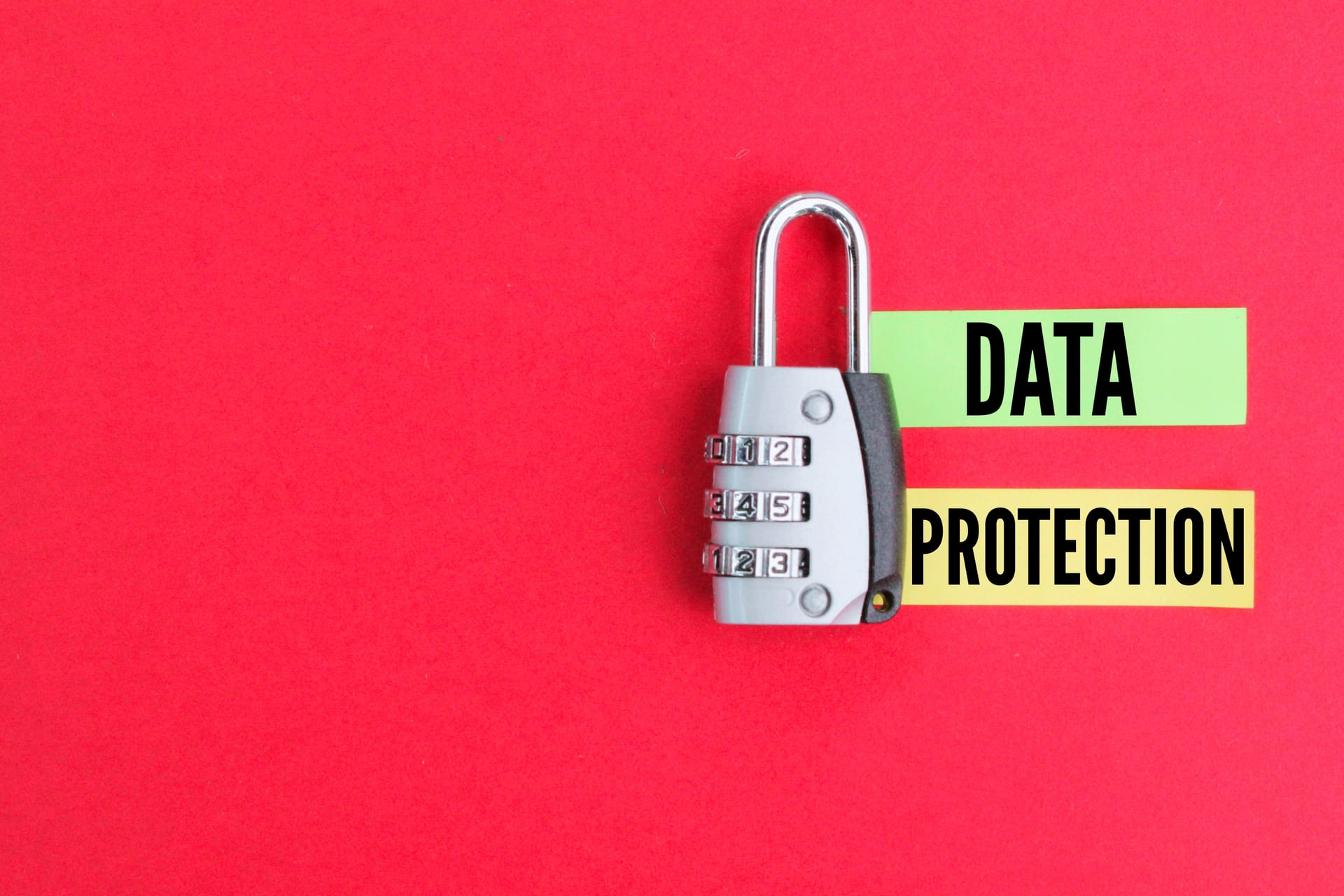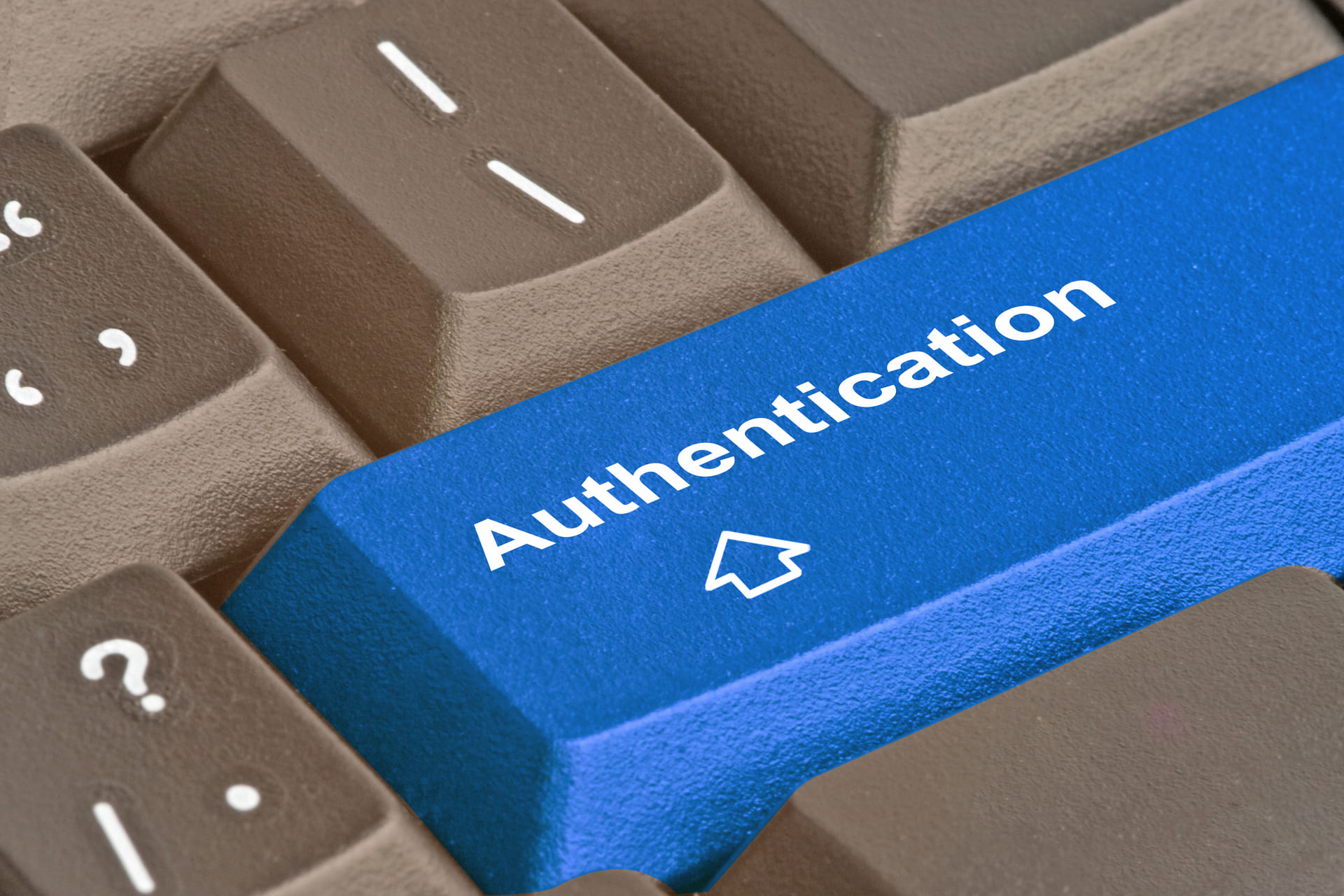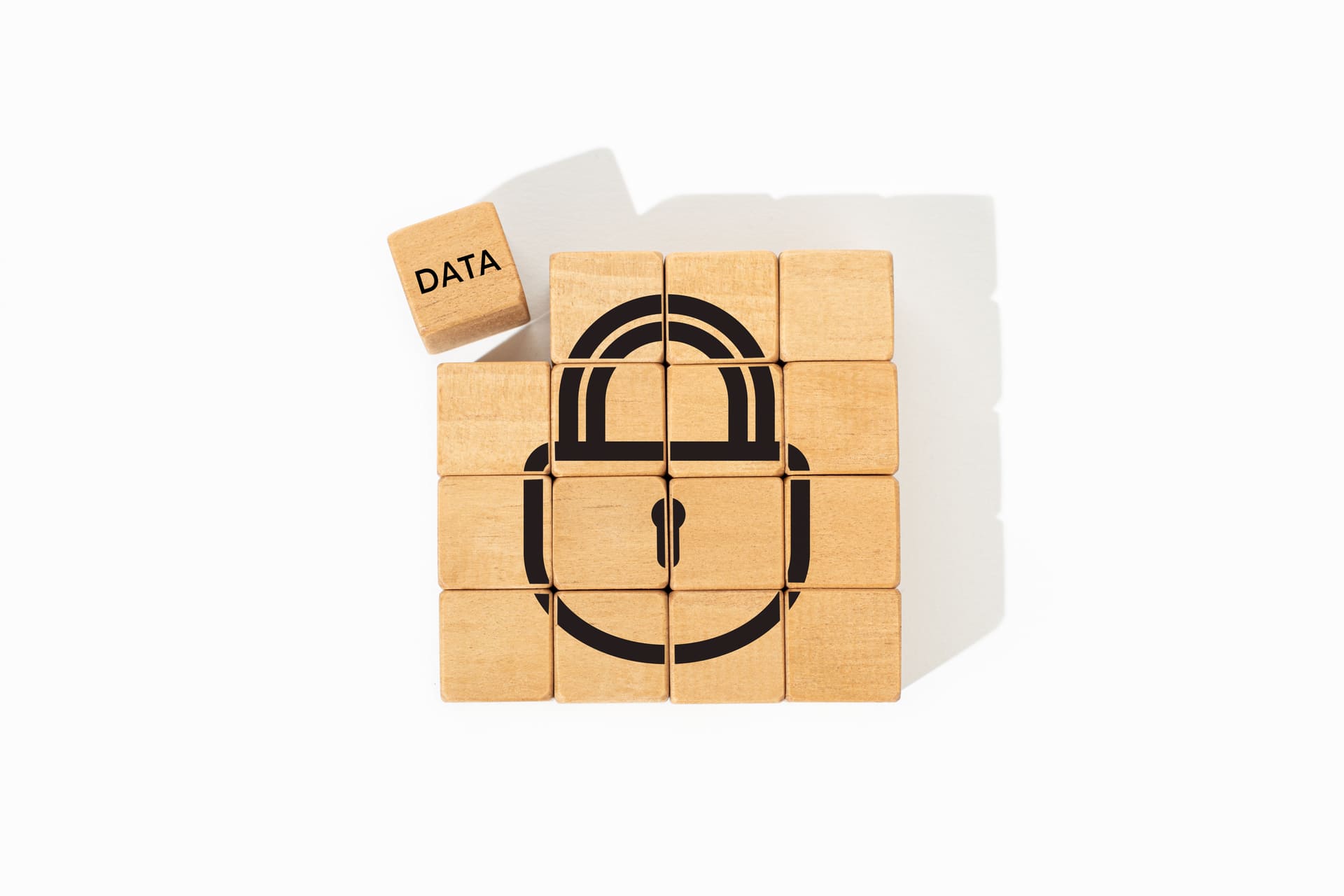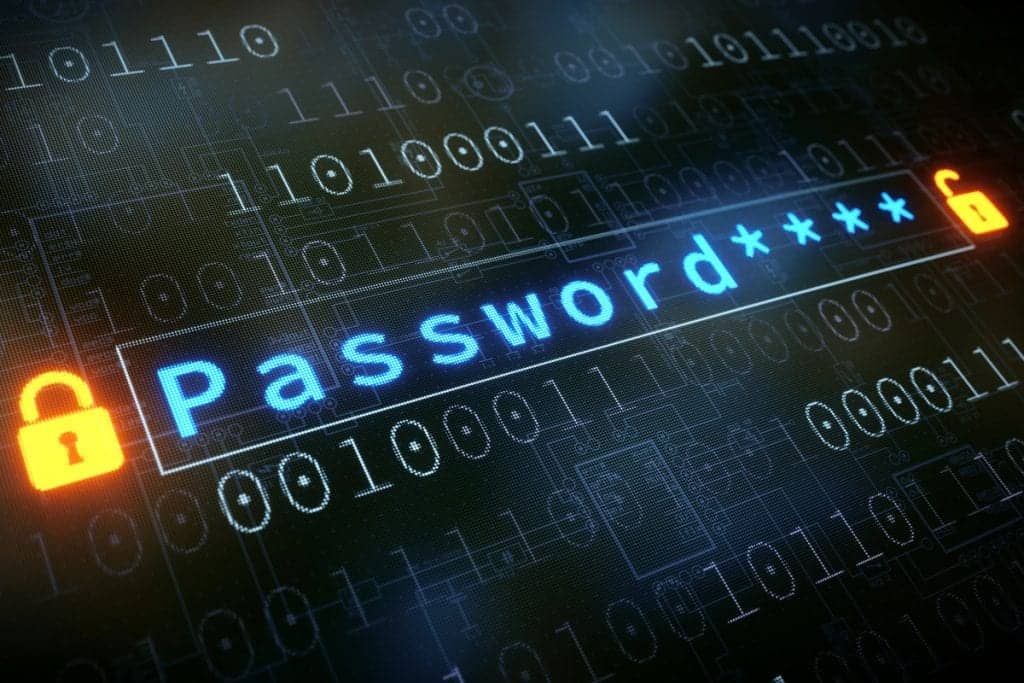Public Key Infrastructure (PKI) is the framework that creates, manages, and validates digital certificates to secure online communications. Think of it as the system behind the padlock icon in your browser, ensuring that websites, emails, and software are authentic and encrypted.
For small and medium businesses, PKI protects sensitive data, prevents impersonation attacks, and satisfies compliance requirements like CMMC, HIPAA, and PCI-DSS.
Without proper PKI implementation, your business faces serious risks. Cybercriminals can intercept unencrypted emails containing confidential information, spoof your company’s identity to defraud customers, or exploit expired certificates to create costly website outages.
A single successful phishing attack can result in losses exceeding $100,000, while compliance violations carry penalties ranging from $5,000 to $100,000 per month. These aren’t distant possibilities; they’re daily threats facing businesses without adequate encryption and authentication measures.
CMIT Solutions eliminates these vulnerabilities through comprehensive PKI implementation and management. Our team of 900+ IT experts has spent 27+ years protecting small and medium businesses with enterprise-grade security solutions tailored to your budget and technical capabilities.
Protect your business with proven cybersecurity services from CMIT Solutions. Contact us today at (800) 399-2648 for a comprehensive security assessment.
Why PKI Matters for Small and Medium Businesses
PKI isn’t just for large enterprises with dedicated security teams. Small and medium businesses actually face greater risks because cybercriminals specifically target companies with limited IT resources, knowing they often lack proper encryption and authentication measures.
Understanding what is cyber security fundamentally helps, but PKI represents a critical component that many SMBs overlook. If your business handles customer data, accepts online payments, sends confidential emails, or works with government contractors, PKI protection is no longer optional.
Compliance requirements make PKI implementation mandatory for many SMBs. CMMC Level 2 certification for defense contractors explicitly requires encrypted communications and certificate-based authentication for Controlled Unclassified Information.
Healthcare organizations must encrypt electronic Protected Health Information (ePHI) in transit to satisfy HIPAA requirements established by the Department of Health and Human Services. Businesses that process credit card payments need SSL/TLS certificates to meet PCI-DSS standards. Without PKI, you can’t achieve compliance, which means you can’t maintain contracts or avoid penalties.
Beyond regulatory mandates, your customers and partners expect secure communications. When someone visits your website and sees a browser security warning because you lack a valid SSL certificate, they leave immediately. When vendors receive emails from your company without digital signatures, they can’t verify that the messages are legitimate. These trust signals directly impact revenue. Research from behavioral analytics firms shows that the majority of users abandon online transactions when they encounter certificate warnings or “not secure” indicators.
The financial impact of weak security controls can be devastating. According to the FBI’s Internet Crime Complaint Center (IC3), business email compromise (BEC) was responsible for $2.77 billion in reported losses in 2024, spread across more than 21,000 incidents.
Meanwhile, industry estimates suggest that small businesses may spend between $120,000 and $1.24 million to respond to and remediate a security breach, though actual costs will vary widely depending on breach scale, data sensitivity, and incident response practices.
At CMIT Solutions, we understand SMB constraints around budget and staffing, which is why we offer managed PKI services that deliver enterprise-grade security at a fraction of the cost of in-house management.
| Security Challenge | Without PKI | With PKI |
| Email authentication | Anyone can spoof sender addresses | Verified sender identity through digital signatures |
| Document signing | No proof of authenticity or tampering | Tamper-proof digital signatures with legal validity |
| Website trust | Customers see security warnings and leave | Valid SSL certificate builds trust and enables transactions |
| VPN access | Password-only authentication is vulnerable | Certificate-based authentication ensures device trust |
| Regulatory compliance | Cannot meet CMMC, HIPAA, or PCI-DSS requirements | Satisfies encryption mandates and passes audits |
✔️ Understanding the financial impact of security incidents is critical for making informed decisions. Calculate the potential cost of downtime and security breaches for your specific business using our IT downtime calculator. This tool helps you quantify what’s at stake when cybersecurity measures like PKI aren’t properly implemented.
PKI Fundamentals: The Digital Passport System
Think of PKI as the DMV for the internet. Just as the DMV issues driver’s licenses to verify identity, PKI issues digital certificates that prove the identity of websites, email senders, and software. You trust a digital certificate for the same reason you trust a license: it’s issued by a verified authority.
Both systems rely on trusted third parties. The DMV checks your identity before issuing a license; a Certificate Authority (CA) does the same before granting a digital certificate that browsers, email clients, and servers recognize as valid.
A digital certificate contains key details such as the owner’s name or domain, a public key, expiration date, and the CA’s digital signature. That signature functions like the hologram on a license; it confirms authenticity.
PKI security rests on a public and private key pair. The public key, shared openly, encrypts data, while the private key (kept secret) decrypts it. This ensures only the intended recipient can read the information.
Without trusted CAs, anyone could issue fake certificates impersonating legitimate entities. PKI solves this by verifying identity and domain ownership before certificates are issued, giving users confidence that digital communications are authentic and secure.
How PKI Works: Public Keys, Private Keys, and Certificates
PKI operates through a specific sequence of steps that happen automatically in the background. Understanding this process helps you appreciate how certificates protect your business communications without requiring constant manual intervention.
- Key pair generation: Your system creates two mathematically linked keys, a public key (shareable) and a private key (secret). These keys are generated using complex algorithms that ensure they work as a perfect pair while making it virtually impossible to derive the private key from the public key.
- Certificate request: You request a digital certificate from a trusted Certificate Authority (CA), proving who you are. This involves generating a Certificate Signing Request (CSR) that contains your public key and organizational information like your business name and domain.
- CA verification: The CA verifies your identity, similar to the DMV checking your documents before issuing a license. For basic website certificates, this means confirming you control the domain. For business certificates, CAs verify your company registration and legal status.
- Certificate issuance: Once verified, the CA creates and digitally signs your certificate, linking your identity to your public key. This signature uses the CA’s own private key, which browsers and operating systems automatically trust based on pre-installed root certificates.
- Encryption in action: When someone sends you secure information, they use your public key to encrypt it; only your private key can decrypt it. This asymmetric encryption ensures confidential data remains protected even if intercepted during transmission across the internet.
- Authentication verification: Recipients can verify your certificate’s authenticity by checking the CA’s digital signature. Their browser or email system automatically performs this verification, comparing the CA’s signature against trusted root certificates stored on their device.
✔️ This process happens automatically in the background for most applications. When you visit a website with HTTPS in the URL, your browser performs all these verification steps in milliseconds before displaying the page.
The mathematical relationship between keys makes encryption secure without requiring you to understand complex algorithms. Modern PKI typically uses 2048-bit or 4096-bit encryption, which means breaking the encryption without the private key would require more computing power than currently exists on Earth. Even with advances in computing technology, breaking this encryption would take millions of years.
| Step | Who Does It | What Happens | Business Benefit |
| Key Generation | Your system | Creates public/private key pair | Foundation of secure communications |
| Identity Verification | Certificate Authority | Confirms you are who you claim to be | Prevents impersonation attacks |
| Certificate Issuance | Certificate Authority | Issues signed digital certificate | Establishes trusted digital identity |
| Secure Communication | You + Partners | Encrypted data exchange begins | Protects sensitive business information |
The Key Components of a PKI System
PKI consists of several interconnected components that work together to create a trusted security framework. Understanding these parts helps you appreciate the ecosystem that protects your business communications.
- Certificate Authority (CA): The trusted third party that issues, signs, and validates digital certificates. Think of them as the organization that vouches for digital identities. CAs like DigiCert, Let’s Encrypt, and GlobalSign maintain strict security controls and verification procedures to maintain trust.
- Registration Authority (RA): Verifies the identity of certificate requesters before the CA issues certificates. Some CAs handle this verification themselves, while others delegate to separate RAs. The RA’s job is to ensure only legitimate entities receive certificates.
- Certificate Database: Stores all issued certificates along with their details and validity periods. This centralized repository allows the system to track which certificates are active, which have expired, and which have been revoked. Organizations can query this database to verify certificate status.
- Certificate Revocation List (CRL): A published list of certificates that should no longer be trusted due to compromise, organizational changes, or other security issues. Systems check this list before trusting a certificate to ensure revoked credentials can’t be used maliciously.
- Certificate Management System: The software and processes that handle certificate creation, distribution, renewal, and revocation. For SMBs, this is often managed by an IT service provider who monitors expiration dates, handles renewals, and ensures proper deployment across all systems.
- Certificate Policy: The documented rules and procedures governing how certificates are issued and managed. This establishes the trustworthiness of the entire PKI system by defining verification requirements, security controls, and operational procedures. Auditors review these policies when assessing compliance.
For small businesses, managing PKI in-house isn’t practical. Most rely on public Certificate Authorities like DigiCert, Let’s Encrypt, or a managed IT provider to handle setup and maintenance. Building your own PKI requires advanced expertise and costly upkeep that rarely makes sense for SMBs.
Your main focus should be selecting the right certificate types and management approach, purchasing from trusted CAs, and ensuring proper deployment, monitoring, and renewal.
Contact us to design a right-sized PKI plan and handle deployment, monitoring, and renewals.
Types of Encryption: Symmetric vs. Asymmetric
Two main types of encryption power modern cybersecurity, and understanding the difference helps explain why PKI is designed the way it is. Both play important roles in protecting business communications, often working together to balance security and performance.
Symmetric encryption uses one key that both encrypts and decrypts data, like a house key that both locks and unlocks the door. This approach is extremely fast and efficient, making it ideal for encrypting large amounts of data. However, it creates a significant problem: you must securely share that key with anyone who needs access. If someone intercepts the key during transmission, they can decrypt all your messages. This key distribution challenge plagued secure communications for decades.
Asymmetric encryption solves the key-sharing problem by using two keys (public and private) that work as a matched pair. Anyone can use your public key to encrypt messages that only you can decrypt with your private key. This eliminates the need to securely transmit encryption keys because the public key can be shared openly without compromising security.
PKI uses asymmetric encryption for authentication and key exchange, then switches to faster symmetric encryption for data transfer. Your system first exchanges a symmetric key securely, then uses it to encrypt all data, combining strong security with efficient performance.
| Feature | Symmetric Encryption | Asymmetric Encryption (PKI) |
| Keys Used | One shared key | Two keys: public and private |
| Speed | Very fast | Slower |
| Key Sharing | Must securely share the key | Public key can be openly shared |
| Use Case | Bulk data encryption | Identity verification, secure key exchange |
| Security Risk | Key distribution is vulnerable | Private key must stay protected |
💡 Everyday example: Imagine sending a locked box through the mail. With symmetric encryption, you must send the key separately, risking interception. Asymmetric encryption avoids this because the recipient already holds their private key. You lock the box with their public key, and only their private key can open it, eliminating key exchange risks.
This is why PKI certificates use public keys. When you visit a website with HTTPS, your browser uses the site’s public key to verify its identity, then both systems exchange a symmetric key to encrypt data efficiently.
Common PKI Use Cases in Business
You probably use PKI every day without realizing it. Here are the most common business applications where digital certificates protect your operations:
- SSL/TLS Certificates for Websites: The padlock icon in your browser shows a valid SSL certificate, proving you’re connected to the legitimate website. Without this, browsers display prominent security warnings that drive customers away. Modern browsers now mark HTTP sites as “Not Secure,” making SSL certificates essential for any customer-facing website.
- Email Encryption and Authentication: S/MIME certificates encrypt email contents and verify sender identity. This prevents email spoofing attacks and protects confidential communications from interception. When you digitally sign an email, recipients know it genuinely came from you and hasn’t been tampered with during transmission.
- Code Signing: Software developers sign their code to prove it hasn’t been tampered with since creation. This is why Windows shows “verified publisher” for trusted software installations. Without code signing certificates, operating systems display warnings that the software could be malicious, discouraging users from installation.
- VPN Authentication: Remote workers connecting to your network use certificates to prove their identity. This certificate-based authentication ensures only authorized devices and users can access company resources, providing stronger security than password-only approaches that are vulnerable to credential theft.
- Document Digital Signatures: Electronic signatures backed by PKI are legally binding and tamper-evident. They’re used for contracts, compliance documents, and secure file sharing. Unlike simple electronic signatures, PKI-based signatures prove both the signer’s identity and that the document hasn’t been modified since signing.
- IoT Device Security: Connected devices like security cameras and smart building systems use certificates to authenticate themselves to your network. This prevents hackers from impersonating legitimate devices or introducing rogue equipment that could compromise your entire system.
- Cloud Application Access: Single sign-on (SSO) systems use PKI to verify user identity across multiple cloud applications. This provides secure access without multiple passwords while maintaining strong authentication through certificate-based verification.
⚠️ Many SMBs already use PKI tools like SSL certificates but overlook other areas where it strengthens security and compliance. Quick wins often come from adding email encryption and VPN certificate authentication to protect business communications.
💡 Everyday example: A manufacturing company once received a fake payment request from a supposed supplier. Thanks to S/MIME certificates, their system flagged the missing digital signature, preventing a $45,000 phishing loss.
CMIT Solutions has deployed PKI solutions for hundreds of SMBs in healthcare, legal, financial, and manufacturing sectors, tailoring certificate systems to meet each industry’s compliance and security needs efficiently.
Additional reading: Learn how attackers try to guess or steal passwords and how to stop them in our guide, what is a brute force attack in cyber security.
Strengthen your email security and prevent costly business email compromise attacks by contacting CMIT Solutions at (800) 399-2648 to implement S/MIME certificates and protect your communications.
How Certificate Authorities Establish Trust
Certificate Authorities (CAs) are the backbone of PKI, acting as trusted third parties that verify identities before issuing digital certificates. Their role ensures that online entities are who they claim to be.
CAs follow a structured hierarchy. Root CAs sit at the top, kept offline and heavily secured like the Federal Reserve. They issue certificates only to Intermediate CAs, which operate like regional banks handling daily transactions. Businesses receive their certificates from these intermediates, but all trust ultimately traces back to the root CA.
Root CAs are stored in protected facilities and rarely come online. Your browser or operating system includes a pre-installed list of these trusted roots. When you visit an HTTPS site, your browser checks whether its certificate links to a trusted root and displays a padlock if verified.
If a CA is ever compromised, affected certificates are revoked, and the CA may be removed from browser trust stores until security is restored.
For small businesses, purchasing certificates from public CAs such as DigiCert or Let’s Encrypt is the simplest and most cost-effective option. Large enterprises may run private CAs internally, but those certificates work only within controlled systems and trigger warnings for external users.
Certificate Lifecycle: From Issuance to Expiration
Certificates move through a defined lifecycle that requires ongoing management to prevent security gaps and service disruptions. Understanding this lifecycle helps you establish processes that keep your business protected without unexpected outages.
- Certificate Request: You generate a Certificate Signing Request (CSR) containing your public key and organizational information. Modern tools automate this process, but you must ensure the information is accurate because it will appear in the issued certificate and can’t be changed without requesting a new certificate.
- Verification Process: The CA verifies your identity and domain ownership before issuance. Verification timeframes vary from minutes for automated domain validation to several days for organization or extended validation certificates requiring manual checks of business registration documents.
- Certificate Issuance: The CA signs your certificate and makes it available for download. The certificate includes your verified information, public key, validity period, and the CA’s digital signature. You must download and securely store the certificate along with any intermediate certificates needed to complete the trust chain.
- Deployment: You install the certificate on your server, email system, or application. This typically involves uploading the certificate file and configuring the application to use it. Testing in a non-production environment before deploying to live systems helps identify configuration issues without impacting business operations.
- Active Use: The certificate authenticates your identity and encrypts communications during its validity period. During this phase, the certificate works automatically in the background, requiring no intervention unless security advisories or vulnerabilities are discovered.
- Monitoring: Tracking expiration dates and watching for security advisories ensures you renew certificates before they expire. Most certificate management tools provide automated monitoring with email notifications at 90, 60, and 30 days before expiration.
- Renewal: Obtaining a new certificate before the current one expires prevents service disruptions. Certificate renewal typically requires repeating the verification process, though some CAs streamline renewal for existing customers. Plan to renew 30-60 days before expiration to allow time for verification and deployment.
- Revocation (if needed): Invalidating certificates that are compromised or no longer needed prevents their misuse. Revocation is immediate but requires you to request it from the CA and then deploy a replacement certificate to avoid service interruptions.
📌 Certificate expiration is a security feature, not a design flaw. Shorter validity periods limit the window of vulnerability if a certificate is compromised. This is why SSL/TLS certificate validity has decreased from five years to three years to two years, and now to a maximum of 398 days (13 months).
| Certificate Type | Typical Validity | Renewal Timing | Business Impact if Expired |
| SSL/TLS Website | 1 year (398 days max) | 30 days before expiration | Website shows security warnings, customers can’t access site |
| Email S/MIME | 1-2 years | 60 days before expiration | Can’t send encrypted emails, digital signatures become invalid |
| Code Signing | 1-3 years | 90 days before expiration | Software triggers security warnings during installation |
| VPN Authentication | 2-3 years | 60 days before expiration | Remote workers lose network access |
💡 Everyday example: A dental practice’s SSL certificate expired on a Friday evening. By Monday morning, patients saw security warnings when trying to book appointments online. The practice lost an estimated 40 appointment bookings over the weekend before their IT provider renewed the certificate on Monday afternoon. The renewal itself took 10 minutes, but finding someone with access to the server at 8 AM on Monday took three hours.
✔️ CMIT Solutions provides proactive certificate monitoring and renewal management, so you never experience unexpected outages due to expired certificates.
PKI Security: Certificate Revocation and Compromise Prevention
Certificates sometimes need revocation before they expire, such as when private keys are compromised, organizations change ownership, or employee credentials must be revoked. Once revoked, the certificate should no longer be trusted, even if it remains technically valid.
The traditional system, Certificate Revocation Lists (CRLs), requires downloading large files that list all revoked certificates. This process adds latency and often becomes outdated quickly. A faster option, Online Certificate Status Protocol (OCSP), lets systems check a certificate’s status in real time. However, OCSP adds network dependency and potential privacy issues.
To solve these challenges, OCSP stapling allows the certificate holder to periodically obtain a signed status from the CA and present it directly to clients. This avoids delays and keeps revocation data current.
Private key protection is just as critical. Keys should be stored in hardware security modules (HSMs), encrypted at rest, and accessible only to authorized personnel. Never share or email private keys.
✔️ If you suspect a certificate compromise, contact your CA immediately to revoke and replace the affected certificate, generate new key pairs, and document the incident for compliance.
💡 Example: A law firm’s email certificate was exposed after a laptop theft. Because they had a response plan, they revoked and replaced the certificate within hours, preventing attackers from impersonating the firm or accessing confidential messages.
PKI Implementation Considerations for SMBs
Implementing PKI doesn’t require the same resources that large enterprises dedicate to security infrastructure. Small and medium businesses can achieve comprehensive PKI protection through practical approaches that match their scale and budget.
- Assess your current certificate usage: Inventory all existing certificates across your organization, including SSL, email, VPN, and code signing. Document where each is deployed, who manages renewals, and expiration dates. Many businesses uncover orphaned certificates during this process that create security risks.
- Identify compliance requirements: Determine which regulations apply, such as CMMC, HIPAA, PCI-DSS, or SOC 2. Each has specific PKI standards for certificate type, encryption strength, and management. Addressing these early ensures compliance and avoids costly retrofits later.
- Choose between managed or in-house PKI: Most SMBs benefit from managed PKI services where providers handle procurement, installation, monitoring, and renewal. Running PKI internally requires specialized staff, tools, and time, often five to ten times the cost of managed services when factoring in staff overhead.
- Select the right certificate types: Match validation levels to your needs. Domain validation suits basic websites. Organization validation adds company identity for customer-facing sites. Extended validation displays your company name in the browser bar and fits e-commerce or high-trust environments.
- Plan for scalable management: As certificates multiply, manual tracking becomes impractical. Use automated monitoring that alerts you 60 to 90 days before expiration and maintains a centralized inventory with renewal procedures, responsible staff, and system integrations clearly documented.
- Budget for total ownership: Certificate fees are only part of PKI costs. Include deployment, monitoring, renewal, replacement, and compliance documentation. Managed services often reduce total costs by consolidating these functions into predictable, subscription-based pricing.
✔️ Working with a managed IT provider removes the learning curve and ensures best practices from the start. CMIT Solutions has deployed PKI for hundreds of businesses using proven processes that reduce risk and prevent disruption.
Our team has implemented PKI across healthcare, legal, financial, and government sectors, tailoring solutions to meet compliance, budget, and technical needs. We deliver enterprise-grade security without unnecessary complexity or cost by integrating PKI with your broader IT management.
For additional guidance on securing your business infrastructure, the CISA Small Business Cybersecurity resources provide practical frameworks aligned with NIST cybersecurity standards.
Contact us to learn how our managed PKI solutions can strengthen your compliance and security posture.
Common PKI Implementation Mistakes to Avoid
After implementing PKI for hundreds of businesses, we’ve seen common mistakes that cause security risks and unnecessary costs. Here’s what to avoid:
- Forgetting certificate expirations: Expired certificates trigger outages and warnings that hurt trust. Set automated alerts at least 60 days before expiration to avoid emergency renewals.
- Using self-signed certificates publicly: Browsers block self-signed certificates and show security warnings. Use trusted public CAs for all external websites and apps, reserving self-signed ones for internal testing only.
- Weak private key protection: Never store keys in shared folders or send them by email. Use encrypted key storage or hardware security modules (HSMs) and strict access controls to prevent compromise.
- No certificate inventory: Keep an updated list of all certificates, expiration dates, and responsible staff. Many outages occur simply because no one tracks renewals.
- Wrong certificate type: Match validation level to your needs. Paying for extended validation when basic domain validation is enough wastes budget, while using the wrong type can fail compliance checks.
- No revocation plan: Have clear steps for contacting your CA and replacing certificates if one is compromised. Delays leave your systems exposed.
- Incomplete chain installation: Always install the full certificate chain, including intermediates, to prevent browser trust errors and connection failures.
💡 Hypothetical scenario: Imagine an e-commerce company discovering its website’s SSL certificate had expired after customers began reporting security warnings. In just six hours of downtime, the business lost an estimated $15,000 in sales and suffered a hit to customer trust.
✔️ With CMIT Solutions’ automated monitoring and renewal management, this situation would have been avoided. Our systems track expiration dates, send proactive alerts, and renew certificates before they lapse. If a certificate issue ever arises, our 24/7 team can revoke, replace, and redeploy it quickly, preventing lost revenue and maintaining customer confidence.
PKI and Compliance: Meeting Regulatory Requirements
PKI directly supports the encryption and authentication requirements found in major compliance frameworks for small and medium businesses. Using certificates to meet these controls helps you design systems that pass audits efficiently.
CMMC: Level 2 and higher require encrypted communication for Controlled Unclassified Information (CUI) and certificate-based multi-factor authentication. PKI satisfies controls such as SC.3.177 (FIPS-validated cryptography), IA.2.078 (multi-factor authentication), and SC.3.185 (encryption to protect CUI in transit). For Defense contractors, implementing PKI is mandatory to meet these non-negotiable requirements.
HIPAA: Covered entities must encrypt electronic Protected Health Information (ePHI) in transit and at rest. While HHS doesn’t specify exact tools, PKI-based SSL/TLS, S/MIME, and VPN certificates are accepted best practices that demonstrate “reasonable and appropriate” safeguards during audits.
PCI-DSS: Requirement 4.1 mandates strong cryptography for all transmissions involving cardholder data. TLS encryption, implemented through PKI, is specifically identified by the PCI Security Standards Council as compliant. Businesses processing payments cannot achieve PCI-DSS compliance without valid SSL/TLS certificates.
SOC 2: Examinations review encryption and authentication controls for security, availability, and confidentiality. PKI provides clear evidence of mature, industry-standard security practices that align with auditor expectations and support favorable SOC 2 outcomes.
| Regulation/Framework | PKI Requirements | Non-Compliance Consequences |
| CMMC Level 2+ | Encrypted communications, certificate-based authentication for CUI | Loss of DoD contracts, fines up to $10,000 per violation |
| HIPAA | Encryption of ePHI in transit and at rest, secure email | Fines from $100 to $50,000 per violation, potential criminal charges |
| PCI-DSS | SSL/TLS for payment processing, encrypted cardholder data transmission | Fines from $5,000 to $100,000 per month, loss of payment processing ability |
| SOC 2 | Encrypted data transmission, certificate-based access controls | Loss of client trust, failed audits, contract terminations |
CMMC compliance and PKI integration
CMMC Level 2 requires encrypted communication for Controlled Unclassified Information (CUI) and certificate-based multi-factor authentication, such as implementing MFA in cyber security. PKI satisfies several CMMC controls simultaneously, including encryption for data in transit (via SSL/TLS and S/MIME) and authentication through digital certificates. This makes PKI one of the most efficient investments for defense contractors pursuing certification.
Defense contractors and their supply chains face unique challenges in achieving CMMC compliance. CMIT Solutions provides comprehensive CMMC compliance services that extend beyond PKI to address every control requirement. Our team supports you through the entire certification process, from gap assessments and implementation to documentation and audit preparation.
✔️ CMIT Solutions specializes in compliance-focused PKI implementation for CMMC, HIPAA, and PCI-DSS. Our certified compliance specialists ensure your PKI environment meets auditor expectations. We use standardized documentation, clear evidence mapping, and audit-ready frameworks to help your organization demonstrate and maintain compliance with confidence.
Managed PKI Services vs. In-House Management
Small and medium businesses must decide whether to build PKI internally or partner with a managed provider. The right choice depends on your resources, risk tolerance, and compliance goals.
Managed PKI services cover the entire lifecycle: certificate procurement, installation, monitoring, automated renewal, revocation management, and audit documentation. Providers like CMIT Solutions add 24/7 monitoring, compliance reporting, and emergency response to prevent downtime. Managed services typically deliver a lower total cost of ownership once you factor in staff time, management tools, and avoided outages.
⚠️ The cost difference between in-house management and managed services becomes clear when you calculate fully loaded expenses. A part-time IT specialist spending 20 hours per month at $50 per hour costs about $12,000 annually in labor alone. Add $1,000–3,000 for management tools and $500–5,000 for certificates, and in-house costs can easily exceed $15,000–20,000 per year, far more than most managed PKI service plans.
💡 Real-world example: A 75-person engineering firm estimated $65,000 annually to manage PKI internally, including staff and software costs. They switched to a managed PKI service at $4,800 per year, saving over $60,000. The savings funded new endpoint protection and security awareness training, improving overall cybersecurity without increasing total spend.
Risk comparison: In-house management increases the likelihood of certificate expirations, compliance gaps, and after-hours renewal emergencies. Managed services shift these risks to the provider, which maintains redundant systems, automated monitoring, and audit-ready documentation to ensure business continuity.
| Factor | In-House PKI Management | Managed PKI Services |
| Staff Expertise Required | Dedicated personnel with PKI training and certifications | None; provider handles all technical aspects |
| Time Investment | 10-20 hours monthly for monitoring and management | Minimal; provider handles routine tasks |
| Typical Annual Cost | $40,000-80,000 (staff time + tools + certificates) | $2,000-10,000 depending on scale and complexity |
| Certificate Outage Risk | Higher; depends on internal processes and staff availability | Lower; provider monitors expiration proactively |
| Compliance Support | Requires additional audit preparation and documentation | Provider documents and demonstrates compliance |
| Response Time for Issues | Limited to business hours unless you staff 24/7 | 24/7 support from the provider’s expert team |
| Best For | Large enterprises with dedicated security teams | SMBs and mid-market companies |
This comparison table shows why most SMBs benefit from managed PKI services that combine lower cost, faster response times, and continuous compliance oversight.
When in-house makes sense: Large enterprises with dedicated security teams, thousands of internal certificates, or strict on-premises requirements may justify managing PKI internally. For most SMBs, managed services provide stronger security, predictable costs, and less operational complexity.
✔️ CMIT Solutions manages PKI infrastructure for clients across healthcare, legal, financial, manufacturing, and government sectors. With 24/7 monitoring and proactive renewals, our network of 900+ IT experts ensures certificates never cause unexpected outages.
Call (800) 399-2648 to discuss your PKI needs or request a transparent cost comparison between managed and in-house approaches.
How to Get Started with PKI Implementation
Implementing PKI doesn’t have to be overwhelming. Here’s a straightforward approach that protects your business without disrupting operations:
- Assess your current state: Inventory all existing certificates across your organization, including SSL, email, VPN, and code signing, and identify gaps where PKI could improve security or compliance. Document expiration dates, deployment locations, and responsible parties to establish your baseline.
- Identify compliance requirements: Determine which regulations apply, such as CMMC, HIPAA, PCI-DSS, or SOC 2, and record each framework’s PKI expectations. Addressing these early helps you meet auditor standards without costly rework later.
- Prioritize use cases: Begin with high-impact, customer-facing applications like website SSL certificates that directly affect revenue, then expand to internal systems. Quick wins demonstrate ROI and help secure leadership support.
- Choose your PKI approach: Decide between public Certificate Authorities for all needs or a hybrid model using private CAs for internal systems. Most SMBs start with public CAs managed by an IT provider, which ensures immediate browser trust without complex setup.
- Select certificate types: Match validation levels to your needs. Domain validation is suitable for basic sites, organization validation for customer-facing businesses, and extended validation for e-commerce, where credibility is critical. Avoid overpaying for features you do not need, but ensure compliance is met.
- Establish certificate management processes: Maintain a central inventory, automate expiration monitoring with 60 to 90-day alerts, and document renewal procedures with backups for responsible staff. Automate wherever possible to reduce human error.
- Train your team: Provide essential training so staff can recognize certificate issues and follow incident response steps. They do not need deep technical skills, just awareness and clear escalation procedures.
- Test and deploy: Install certificates in a test environment, verify functionality, and deploy during planned maintenance windows. Keep a rollback plan with backups ready in case issues arise.
- Monitor and maintain: Continuously monitor certificate health, expiration, and CA advisories. Review your PKI setup quarterly to confirm all certificates remain current and properly tracked.
📌 Working with an experienced managed IT provider removes the learning curve and ensures best practices from day one. CMIT Solutions has deployed PKI for hundreds of businesses using proven processes that minimize risk and prevent business disruption.
The Future of PKI: Post-Quantum Cryptography and Emerging Trends
PKI continues to evolve to meet emerging threats and new technologies. Understanding these developments helps you make informed long-term decisions about your security infrastructure. You do not need to worry about quantum computers breaking your certificates today, but knowing where encryption is heading can help you avoid costly overhauls later.
Quantum computing poses a theoretical threat to current encryption methods because it could break the mathematical structures that make RSA and ECC secure. While traditional computers would take millions of years to crack 2048-bit RSA encryption, sufficiently advanced quantum computers could do it in hours or days. However, such machines are still theoretical and likely a decade or more away.
The National Institute of Standards and Technology (NIST) is developing quantum-resistant algorithms through its Post-Quantum Cryptography Project, with final standards expected in 2024–2025. These algorithms are designed to withstand both classical and quantum attacks, ensuring continued protection as computing power advances.
The transition to quantum-resistant PKI will happen gradually through hybrid encryption systems that combine existing and post-quantum methods. Certificate Authorities will begin issuing hybrid or quantum-resistant certificates well before the technology becomes a real-world threat, allowing organizations to adopt them at their own pace.
Certificate automation is also becoming a necessity as validity periods continue to shorten. SSL/TLS certificates have already moved from three-year to one-year lifespans, and discussions are underway about reducing them to 90 days. Automation ensures businesses can manage these shorter cycles efficiently while reducing exposure to expired or compromised certificates.
PKI for IoT and edge devices: Many connected devices have limited computing power, making traditional encryption methods impractical. Lightweight certificate protocols and dedicated hardware security modules are being developed to secure IoT environments without overloading device resources.
⚖️ What SMBs should do now: Focus on strong certificate management practices with your current PKI setup. Businesses that maintain automated renewals and clear documentation today will be best positioned for a smooth transition to post-quantum cryptography.
CMIT Solutions stays aligned with NIST and CISA guidance on quantum-resistant cryptography to ensure our clients’ PKI environments remain secure. Our team will guide you through future transitions just as we have through previous encryption updates, keeping your systems compliant and resilient without disruption.
Why Choose CMIT Solutions for PKI Implementation and Management
PKI can feel complex for businesses without dedicated IT security teams. The terminology is technical, the consequences of mistakes are serious, and ongoing management requires constant attention. CMIT Solutions removes that burden through comprehensive PKI services designed for small and medium businesses.
Experience and expertise:
- 25+ years of managed IT services experience
- 900+ IT experts across the CMIT network
Hundreds of successful PKI deployments for SMBs in healthcare, legal, financial, and government contracting sectors - Certified professionals with expertise in CMMC, HIPAA, PCI-DSS, and SOC 2 compliance
Integrated security approach:
- PKI is designed to work alongside your broader IT strategy, including endpoint protection, network monitoring, backup, and security awareness training
- Enterprise-grade security without enterprise-level complexity or cost
- Architectures tailored to your industry’s compliance and operational needs
What sets CMIT Solutions apart:
💡 Proactive certificate monitoring that prevents outages before they occur
💡 24/7 support for renewals, revocations, and incident response
💡 Comprehensive audit documentation that satisfies compliance requirements
💡 Transparent pricing with no hidden renewal or emergency fees
💡 Local service and personal relationships backed by national-scale resources
Local service matters when you need immediate support for certificate issues or security incidents. CMIT Solutions operates through locally owned and operated offices that understand your market, can send technicians on-site when needed, and build lasting relationships with your team.
PKI as part of a complete cybersecurity strategy:
PKI is one component of comprehensive cybersecurity. CMIT Solutions integrates PKI with multi-factor authentication, endpoint protection, security awareness training, and continuous monitoring to protect your business from evolving threats.
CMIT Solutions has implemented PKI infrastructure for hundreds of small and medium businesses across North America. Our goal is to deliver enterprise-grade protection, seamless compliance, and long-term reliability so you can stay focused on running your business.
See CMIT Solutions in action
Watch how we transformed IT operations for Optyx, a multi-location vision care business that needed seamless technology across its expanding network. This video case study demonstrates our approach to implementing comprehensive IT solutions, including a secure communications infrastructure similar to PKI implementations.
The Optyx story showcases our methodology: thorough assessment identifying gaps and opportunities, customized implementation tailored to business requirements, proactive management preventing issues before they occur, and an ongoing partnership that evolves with your business.
Whether you need PKI implementation, CMMC compliance, or complete managed IT services, we bring the same level of expertise and dedication to your business. Learn more about the Optyx partnership.
Ready to implement PKI or discuss your cybersecurity compliance requirements? Contact CMIT Solutions at (800) 399-2648 to speak with a certified IT security specialist.
Frequently Asked Questions
Can we use the same certificate across multiple servers or do we need separate certificates for each?
Whether you need separate certificates depends on your infrastructure and certificate type. Standard SSL certificates are tied to a single fully-qualified domain name and can only be installed on one server at a time without creating conflicts.
However, you can install the same certificate on multiple servers if they’re behind a load balancer sharing the same domain name.
If we’re acquired by another company or change our business name, what happens to our existing certificates?
Business acquisitions and name changes require certificate reissuance because certificates contain your verified legal business name in organization validation and extended validation certificates.
Domain validation certificates tied only to your domain name may continue working if the domain doesn’t change, but you should still reissue them to reflect proper ownership.
How do we verify that our current IT provider is actually monitoring our certificates properly?
Request a complete certificate inventory from your provider showing all certificates they manage on your behalf, including certificate types, domains covered, expiration dates, and deployment locations. Ask for documentation of their monitoring procedures and escalation processes when certificates approach expiration.
What’s our liability if a certificate we issued is used maliciously after an employee departure?
Your liability depends on several factors, including how quickly you revoke compromised certificates, whether you can demonstrate reasonable security practices, and the specific circumstances of misuse.
Can certificates be transferred between different Certificate Authorities or do we have to start over if we switch providers?
Certificates cannot be directly transferred between Certificate Authorities because each certificate is cryptographically signed by the issuing CA’s private key. Switching CAs requires obtaining new certificates from the new provider, which means going through the verification process again and generating new key pairs.










